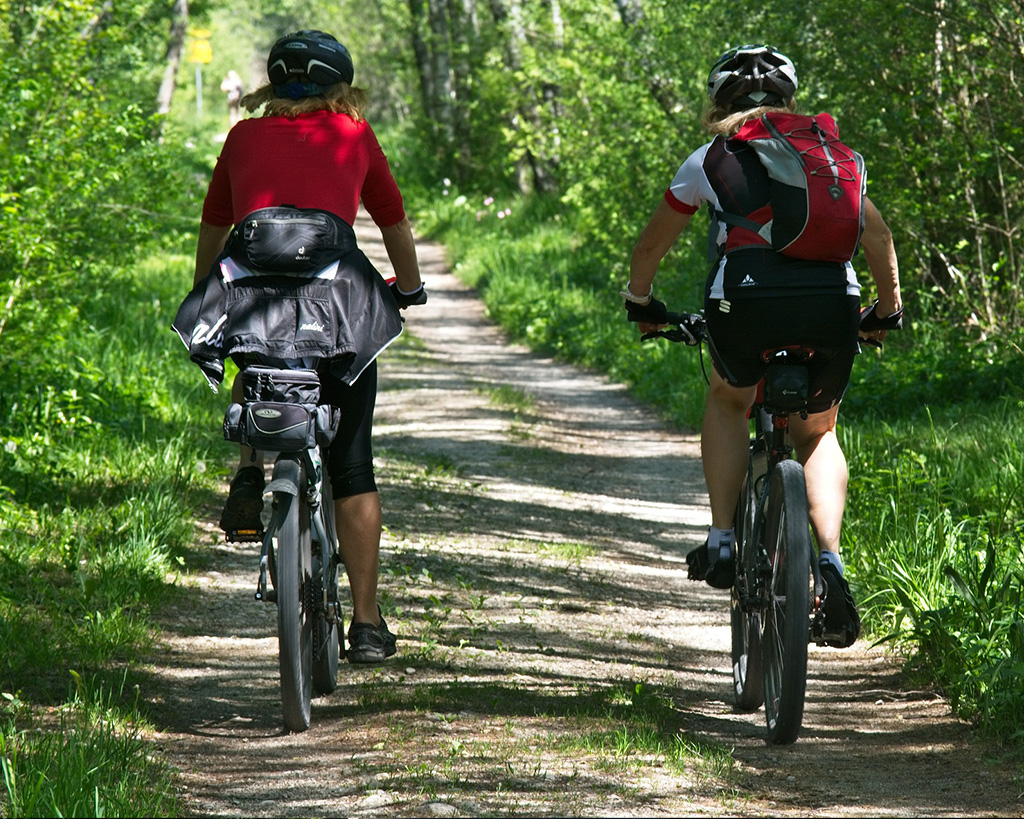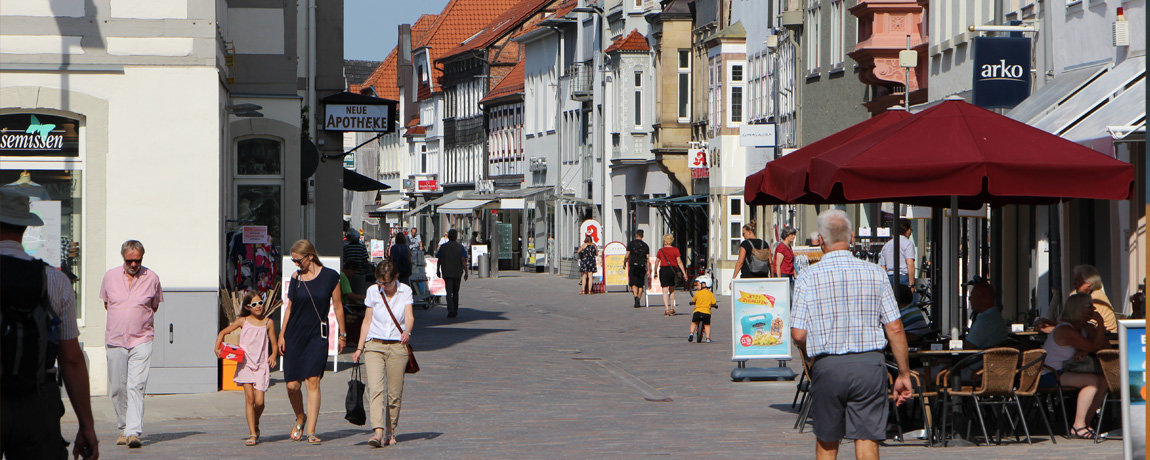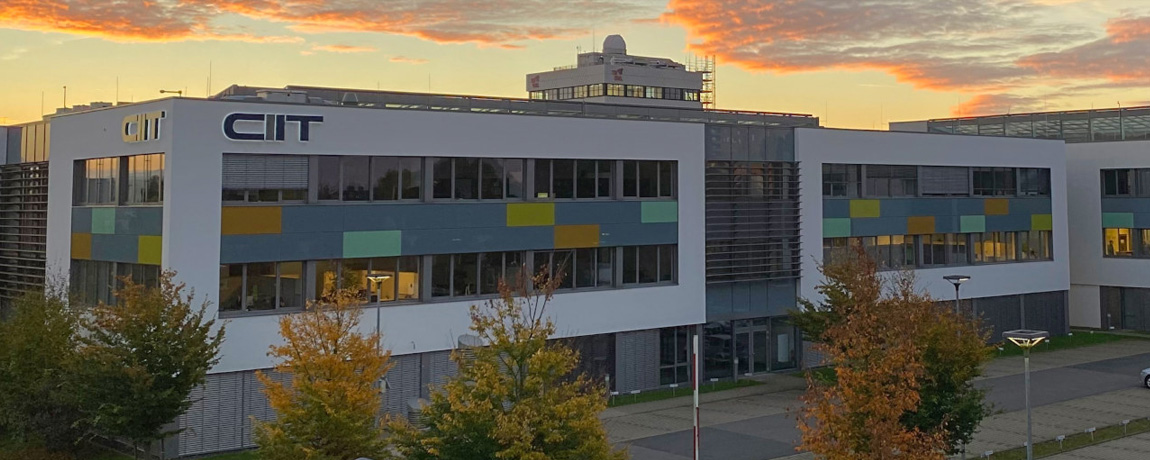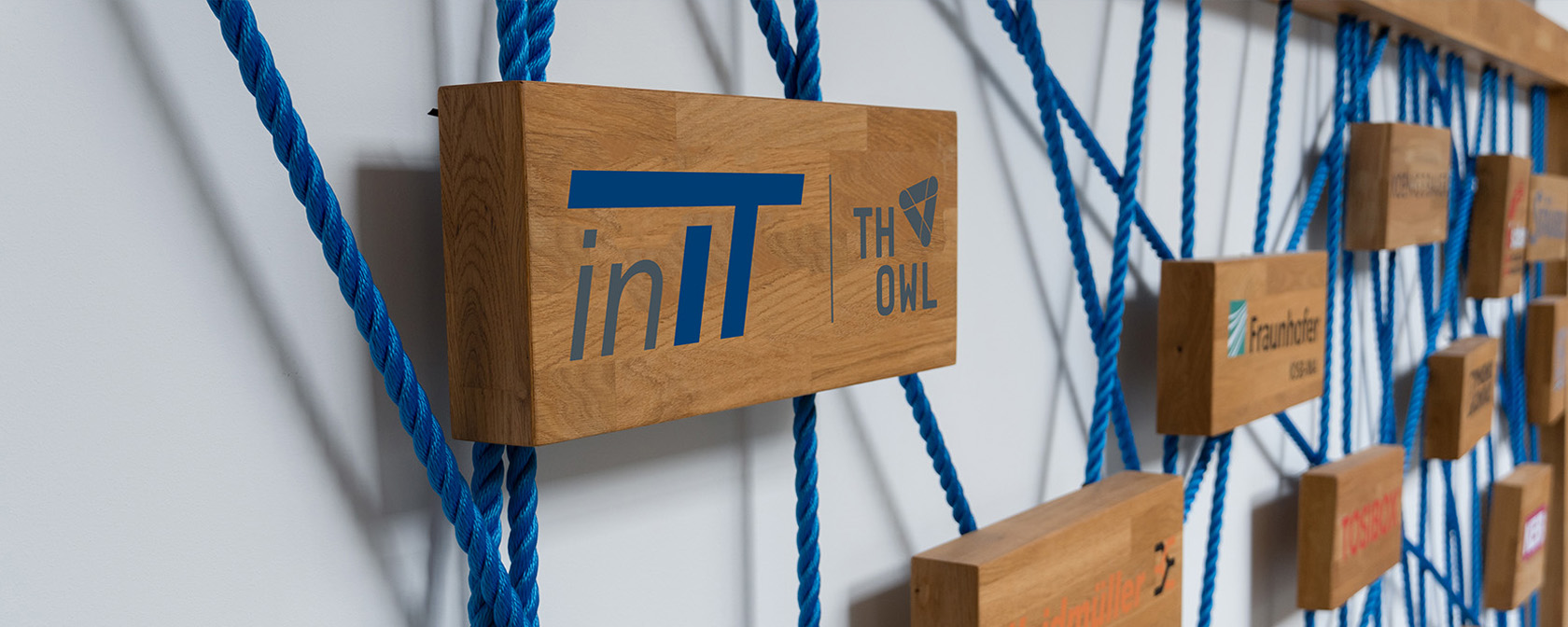Local Information
Lemgo – A place full of history, nature and innovation
We are in presence again: This year 2023 is an important year for all of us to enjoy a life with only a few corona-related restrictions. And so we can offer the worldwide INDIN2023 participants a wonderful opportunity to take a breath in Lemgo, in contrast to the mask-like days of the last three years.
Lemgo is in the center of the UrbanLand OstWestfalenLippe, a region with approximately 2 mio. inhabitants where the vision of the "new balance of city and countryside" is to become reality. The UrbanLand is the place for people who want to combine the offers and opportunities of urban life with the amenities of manageable and "natural" small-town and rural structures. Lemgo is located at the Teutoburg Forest, which is considered the longest low mountain range in Germany. If you come here, you can expect a healthy, natural time in a beautiful landscape. Here you will find charming towns and villages with cultural and culinary character and a lot of history.
Videosource: Land des Hermann | Teutoburgerwald
Whether you want to hike or bike, there is something for every nature lover. Along the way, you can climb the Externsteine, a rock formation from the Ice Age that is a popular destination for excursions because of its scenic beauty and the many myths that surround it. Or just a few miles away, the Hermann Monument, which commemorates the Battle of Varus in the Teutoburg Forest in 9 AD. In historic Hanseatic towns like Lemgo, you can experience how medieval trade brought prosperity to the region, and in magnificent monasteries and castles you can discover the most beautiful treasures of cultural history.
And, of course, you can take great photos that, in addition to enjoying the scientific and technical program, will give you a wonderful memory of INDIN 2023.
We look forward to seeing you in Lemgo.
P.S.: If you like hiking or biking don't forget to pack sturdy shoes 😉
“Look deep into nature, and then you will understand everything better.”
Albert Einstein, Physicist
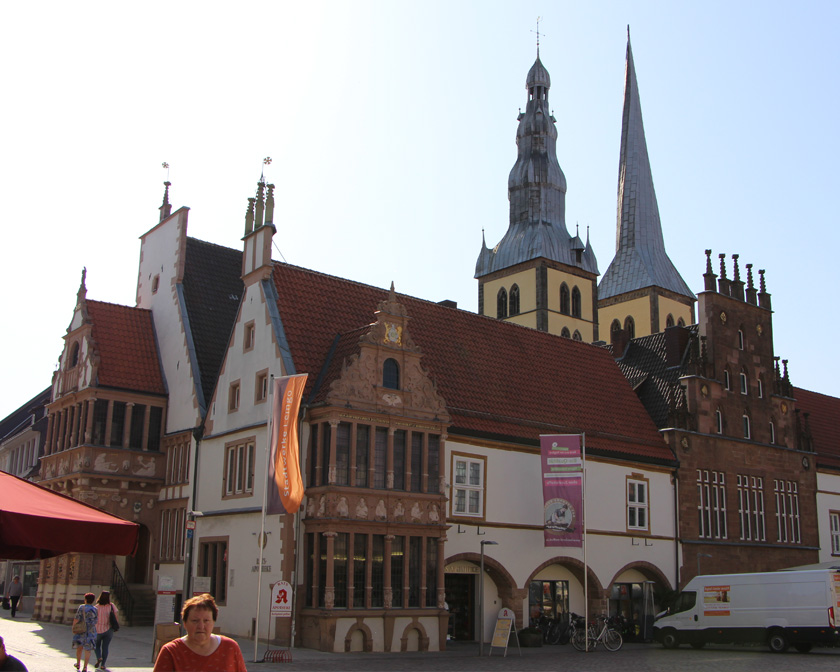
Old hanseatic and university town of Lemgo
Lemgo is a charming town located in the eastern part of North Rhine-Westphalia, Germany. It has a population of around 43,000 inhabitants and is situated in the Lippe district, in the heart of the Teutoburg Forest. It is situated approximately 30 kilometers (19 miles) east of Bielefeld and 100 kilometers (62 miles) southwest of Hannover. More than 800,000 people live in a radius of 25 km around Lemgo.
The town has a rich history that dates back to the 12th century when it was founded by Bernhard II, the bishop of Paderborn. Over the centuries, Lemgo has been an important center of trade and commerce, and it played a significant role in the Hanseatic League, a medieval trade association of cities and towns in northern Germany.
Lemgo is famous for its well-preserved historic center, which features many beautiful buildings from the Middle Ages and the Renaissance. The town hall, with its distinctive bell tower, is one of the most impressive buildings in the center, and it houses a museum that showcases the history and culture of Lemgo.
Other notable buildings in the town include the Hexenbürgermeisterhaus, a 16th-century house that was once the residence of the town's witch mayor, and the St. Nicholas Church, a Gothic church that dates back to the 13th century.
In addition to its rich history and culture, Lemgo is known for its scenic surroundings and outdoor activities. The Teutoburg Forest offers many opportunities for hiking, biking, and camping, and the nearby Weser River is a popular destination for boating and fishing.
For those interested in culture, Lemgo offers many museums, concerts, etc. There are over 400 of the most beautiful monuments in the region around Legmo. The travel guide reisepartner.de ranks Lemgo among the cities with the most beautiful half-timbered houses in Germany.
In lemgo, there are more than 230 stores and restaurants for an exuberant shopping experience in one of the most beautiful pedestrian zones in the region.
Sports fans will feel quite at home in Lemgo. Notable Lemgo teams include the Federal Handball League team TBV Lemgo as well as its national champion Artistic cycling team.
Overall, Lemgo is a charming town that offers a unique blend of history, culture, and natural beauty. It is a great destination for anyone who is interested in exploring the rich heritage and traditions of Germany's rural communities.
Ostwestfalen-Lippe (OWL)
Ostwestfalen-Lippe (OWL) is the eastern region of the German state of North Rhine-Westphalia with a population of about two million inhabitants. OWL is one of the strongest economic areas of Germany and the no.2 region of machine- and plant-engineering in Germany. Some major globally operating companies are headquartered in the region, for example Bertelsmann, Miele, Dr. Oetker, Melitta, Gerry Weber, DMG Mori Aktiengesellschaft, Schüco, Wincor Nixdorf, Phoenix Contact, Weidmüller and Claas. In 2012 OWL became Germans BMBF Leading Edge Technology Cluster for intelligent Technical Systems (it's OWL), which is currently the largest public funded project in the context of the government initiative "Industry 4.0". Universities are located in Bielefeld, Paderborn and Lemgo. The Fraunhofer Society is engaged in OWL in Lemgo and Paderborn. The Teutoburg Forest stretches across the region. It is the supposed site of the Battle of the Teutoburg Forest in the year 9 AD, where an alliance of Germanic tribes defeated a Roman army. In 1875, a statue was unveiled of the commander Arminius, who led the Germanics to victory at the battle. This statue, the Hermannsdenkmal, is one of the best-known sights in OWL.
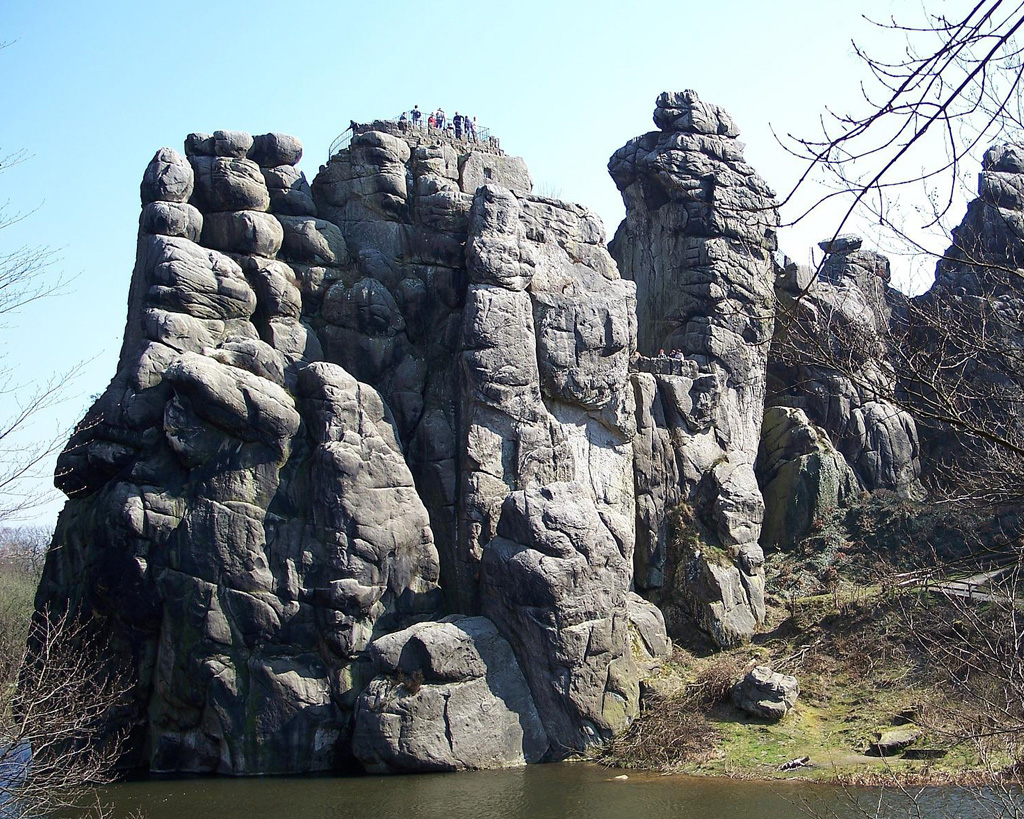
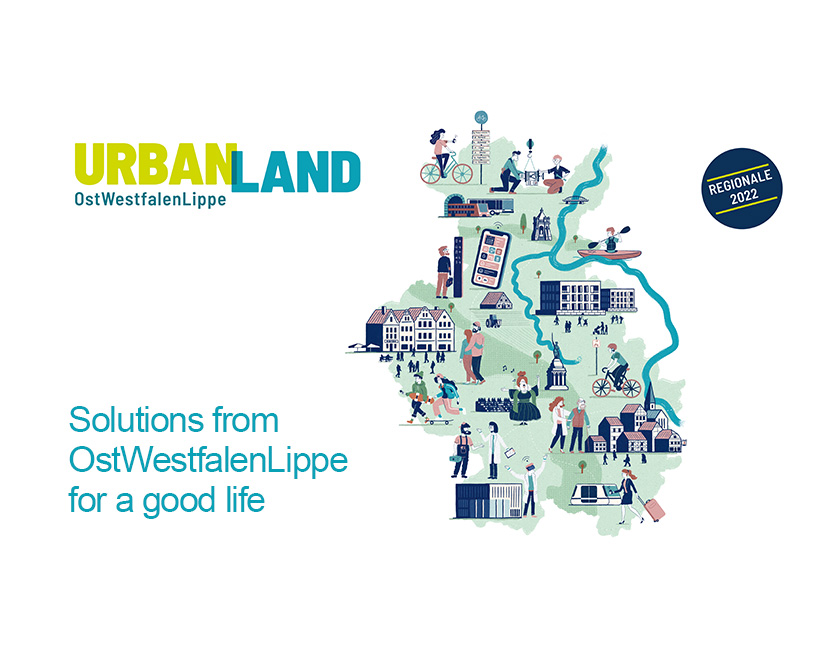
UrbanLand OstwestfalenLippe
The UrbanLand OstWestfalenLippe is the place where the vision of the "new balance of city and country" is to become reality. The UrbanLand OstWestfalenLippe is the place for people who want to combine offers and opportunities of urban and metropolitan life with the amenities of manageable and "natural" small-town and rural structures. In the UrbanLand, an urban lifestyle is possible anywhere, urban and rural. UrbanLand has an open society, is modern and innovative, in all its corners and yet authentic: city is city, village is village. UrbanLand offers retreats and a climate of social warmth.
Culture and history in OWL”
Hermannsdenkmal Monument
Hermannsdenkmal, also known as the Hermann Monument or Arminius Monument, is a large monument located in the Teutoburg Forest near the city of Detmold in Germany. The monument was built between 1838 and 1875 to honor the ancient Germanic leader Arminius, also known as Hermann, who led his people to victory over the Roman legions in the Battle of the Teutoburg Forest in 9 AD.
The monument is 53 meters tall and is made of copper and bronze. It depicts Hermann standing triumphantly with a sword in his hand, looking out over the landscape where the battle took place. The statue is mounted on a pedestal made of sandstone and granite, which is decorated with reliefs depicting scenes from the battle and other important events in German history.
Hermannsdenkmal is not only a symbol of German national pride but also an important historical landmark. The Battle of the Teutoburg Forest was a significant event in the history of the Roman Empire, as it marked the end of Roman expansion into Germany and the beginning of the gradual decline of the empire.
Today, the monument is a popular tourist attraction and a site for cultural and educational events. Visitors can climb to the top of the monument for a panoramic view of the surrounding countryside, or visit the nearby museum to learn more about the history of the battle and the construction of the monument. The site is also used for concerts, festivals, and other cultural events.
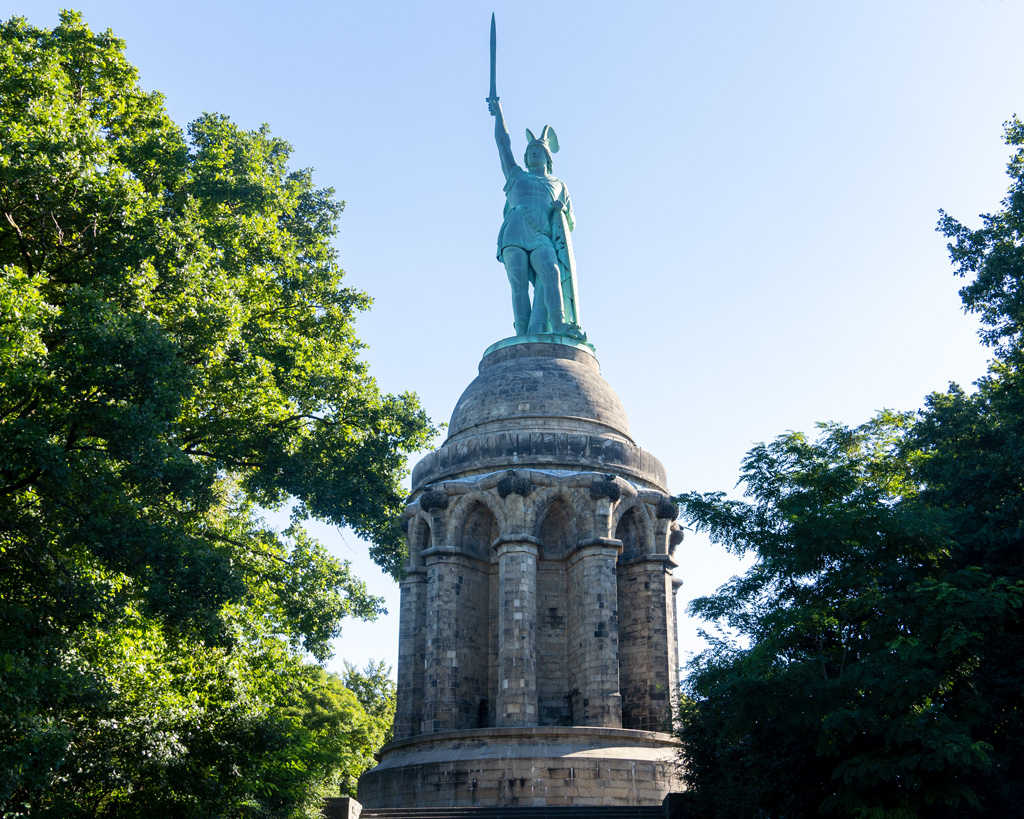

Externsteine
Externsteine is a unique rock formation located in the Teutoburg Forest in the Lippe district of Germany. It consists of several large sandstone pillars rising up to 40 meters high, which are thought to have been formed over 70 million years ago during the Cretaceous period.
Externsteine has been a site of cultural and religious significance for centuries. The site has been used by various groups, including the Saxons, who worshipped their gods there, and Christians, who later built a chapel on the site.
The site is also associated with various legends and myths, including the legend of a dragon that once lived in a nearby cave and was slain by a knight. The site has also been associated with various mystical and esoteric beliefs, including the belief that it was once a site of druidic worship.
Today, Externsteine is a popular tourist destination and a site for research and study in the fields of geology, archaeology, and anthropology. The site is also used for various cultural and religious events, including Easter sunrise services, pagan festivals, and medieval fairs.
The site has been designated as a nature reserve and a cultural monument, and it is carefully managed to preserve its natural and cultural heritage. Visitors can explore the site on guided tours, climb the rocks, and enjoy the beautiful natural surroundings. The site also has a museum and visitor center that provides information about the site's history, geology, and cultural significance.
State Horticultural Show Höxter 2023
Gardening like the monks did in the Middle Ages, blooming flowers at the foot of the Corvey World Heritage Site, strolling along the Weser and Wall: the North Rhine-Westphalian garden show town of Höxter scores with history and botanical diversity. In addition to an urban flowering meadow, the archeology park brings a sunken city back to life. The Remtergarten at the castle shows ancient and new types of vegetables, but also a large variety of edible flowers. The harvest is freshly cooked in the outdoor kitchen on the Square of Delights. A little train takes visitors to the half-timbered town of Höxter. Or you can take a steamer along the Horticultural Show Park. You can stroll along the promenade along the Weser on foot. It continues with a 70 meter long horizon bench to the quaint old town alleys. Three large playgrounds, a hands-on excavation and a hemp labyrinth make the 2023 State Horticultural Show in Höxter attractive for families with children.
Höxter is about 60 km away from Lemgo.
More about the State Horticultural Show
Flyer about State Horticultural Show
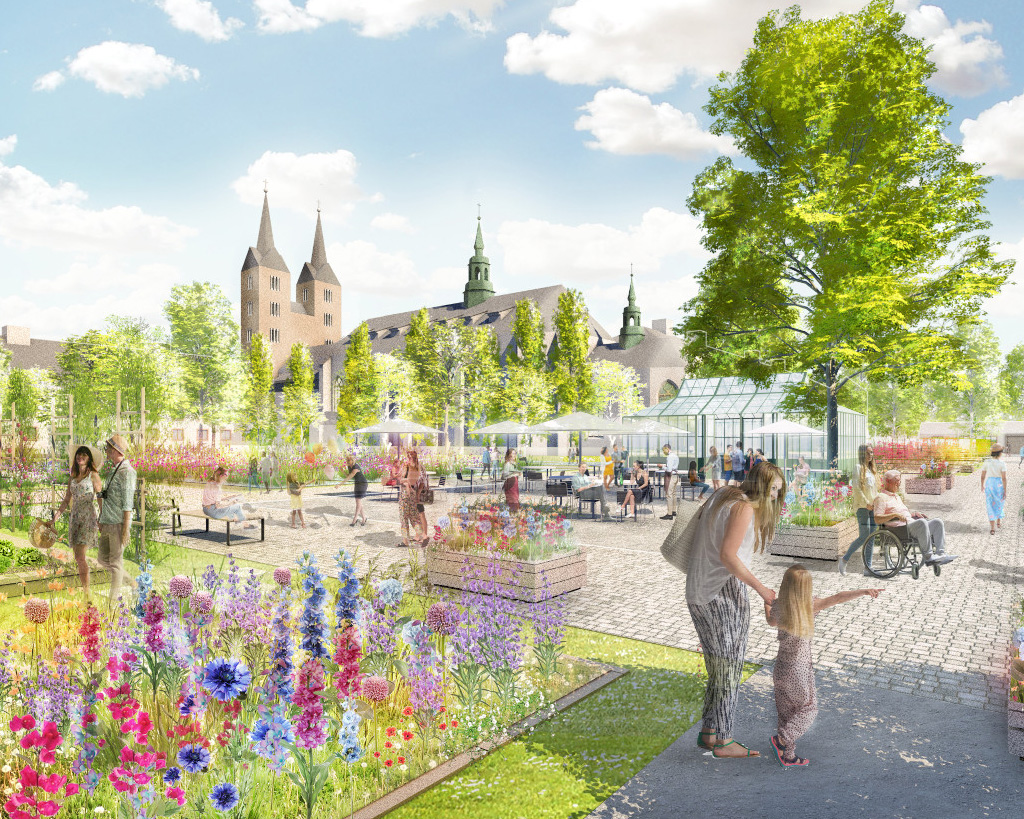

UNESCO World Heritage Corvey
World Heritage Corvey, also known as Corvey Abbey, is a former Benedictine monastery located in Höxter, Germany. It was founded in the year 822 by Count Warin and his wife, Gerswind, as a religious and cultural center. The abbey played an important role in the Carolingian Renaissance and was a major center of learning and culture during the Middle Ages.
The abbey's most significant feature is its Romanesque church, which is considered a masterpiece of Carolingian architecture. The church has a unique floor plan with a crypt and ambulatory, which were later adopted in the construction of other European churches. The church also has a large nave with two towers and a unique westwork, which is a structure that protrudes from the west end of the building.
In addition to the church, the abbey complex includes a number of other buildings, including a cloister, chapter house, library, and dormitory. The library was particularly significant, as it housed a large collection of manuscripts and was a center of intellectual activity during the Middle Ages.
Today, World Heritage Corvey is recognized as an important cultural and historical site, and is a popular tourist destination. Visitors can explore the abbey complex and learn about the history and culture of the region. The site was added to the UNESCO World Heritage List in 2014 in recognition of its outstanding universal value as an example of Carolingian architecture and a center of learning and culture during the Middle Ages.
Corvey is close to Höxter. It is about 60 km away from Lemgo.
“First class sport in OWL”
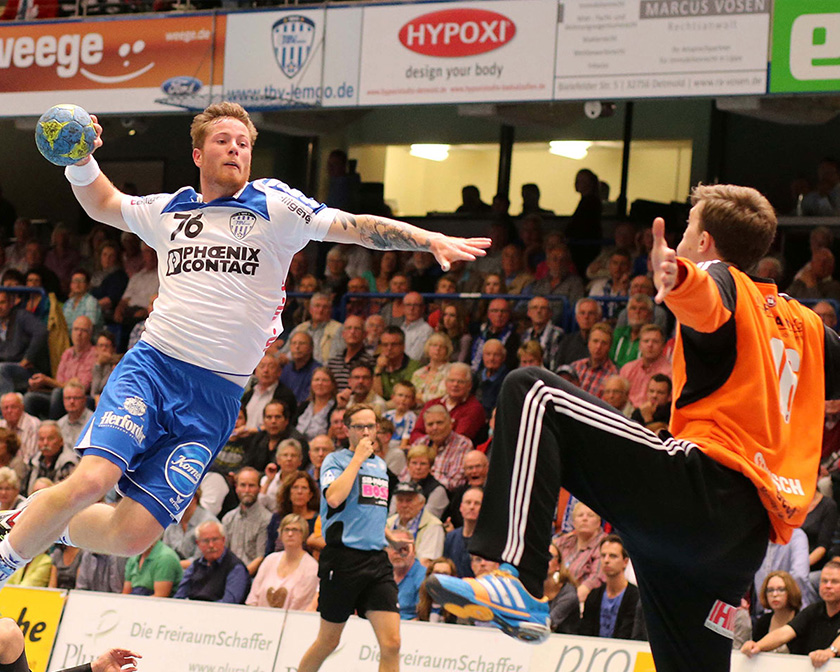
TBV - Lemgo
TBV Lemgo is a professional handball club based in the city of Lemgo, Germany. The club was founded in 1861 and has a long and proud history in German handball, with numerous domestic and international titles to their name.
TBV Lemgo's home arena is the PhoenixContact Arena, which has a capacity of around 5,000 spectators. The team's colors are blue and white.
The club has had many successful periods throughout its history, particularly in the 1990s and 2000s, when they won several domestic titles, including the German Handball Bundesliga in 1997 and 2003. They have also had success in European competition, reaching the final of the EHF Cup in 2003 and the semifinals of the Champions League in 2007.
In recent years, TBV Lemgo has been a regular presence in the top tier of German handball and has consistently competed for domestic honors. The team's current head coach is Florian Kehrmann, a former German international player who was part of the TBV Lemgo team that won the Bundesliga in 2003.
Overall, TBV Lemgo is one of the most successful and respected handball clubs in Germany and has a passionate fanbase both in Lemgo and across the country.
“Activities in nature”
Overall, Ostwestfalen-Lippe offers a wide range of hiking opportunities for visitors of all levels of experience. Whether you are looking for a leisurely walk through scenic countryside or a challenging hike up rugged terrain, there is something for everyone in this beautiful region.
Teutoburg Forest
This is one of the most popular hiking destinations in Ostwestfalen-Lippe. The Teutoburg Forest is a low mountain range that runs from north to south through the region. It offers a range of hiking trails for all levels of hikers, from easy walks through the forest to challenging hikes up steep inclines. Some of the popular trails include the Hermannsweg, Eggeweg, and the WestfalenWanderWeg.
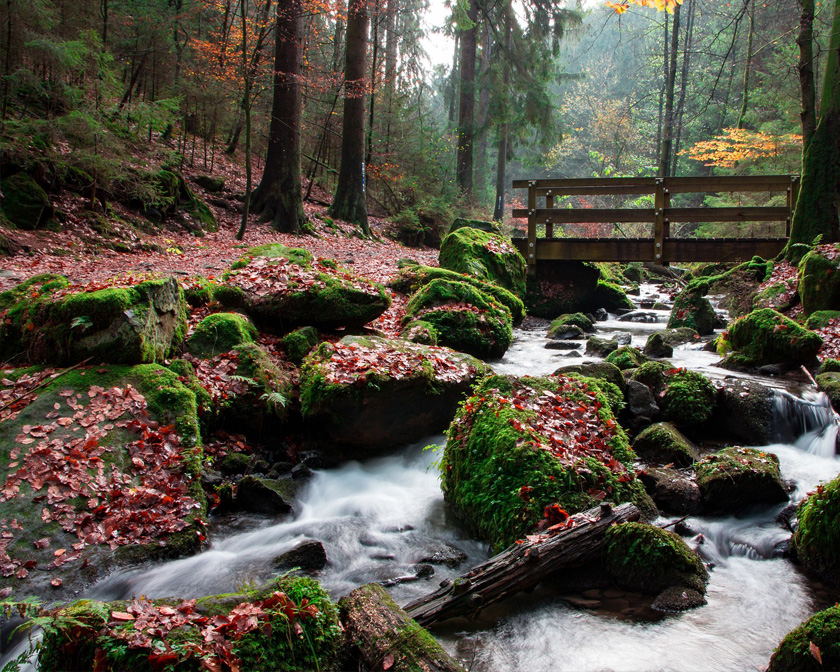
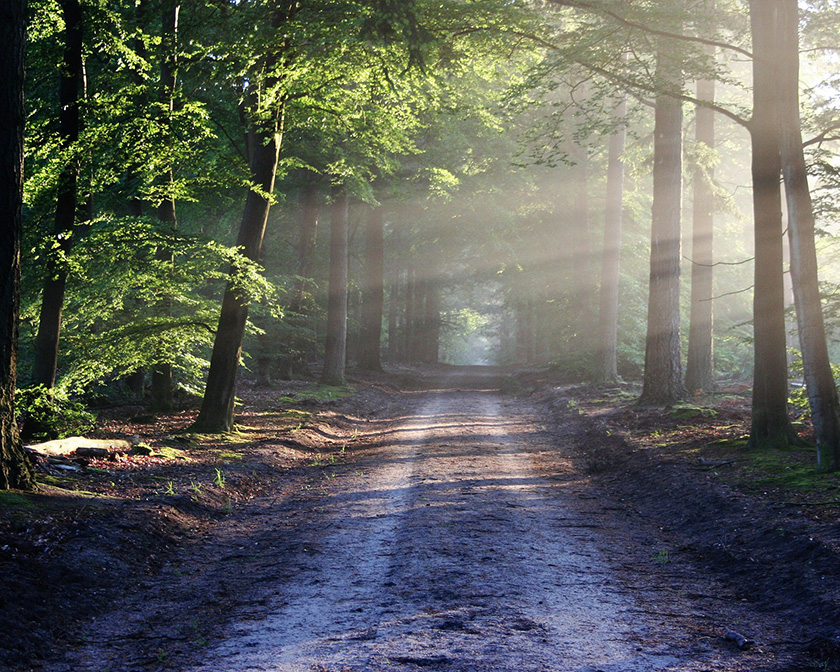
Senne
The Senne is a nature reserve located in the east of Ostwestfalen-Lippe. The region is known for its heathland, grassland, and moors. There are many hiking trails that wind through the Senne, offering visitors the chance to see a variety of wildlife, including deer, wild boar, and rare birds. Some popular hiking trails include the Senne-Wanderweg and the Eggegebirge-Senne-Wanderweg.
Eggegebirge
The Eggegebirge is a mountain range located in the southeast of Ostwestfalen-Lippe. It is known for its rugged terrain, beautiful forests, and stunning views. There are many hiking trails that wind through the Eggegebirge, offering visitors the chance to see the region's natural beauty up close. Some popular hiking trails include the Eggeweg and the Hermannsweg.

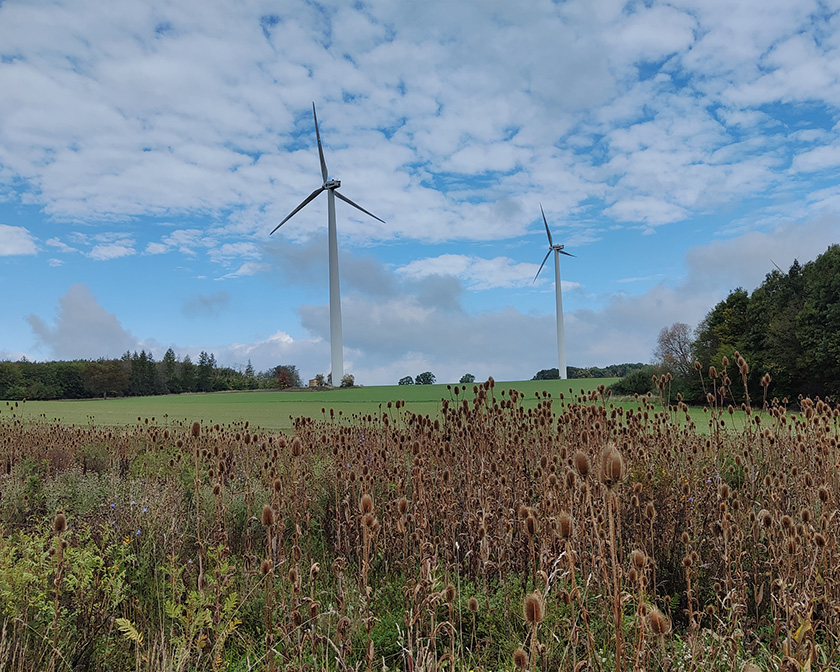
Weser Uplands:
The Weser Uplands is a hilly region located in the east of Ostwestfalen-Lippe. The region is known for its scenic countryside and picturesque towns. There are many hiking trails that wind through the Weser Uplands, offering visitors the chance to see historic castles, beautiful rivers, and quaint villages. Some popular hiking trails include the Weserberglandweg and the Rundwanderweg Holzhausen.
Biking in OWL
One of the most popular bike routes in OWL is the Ems Cycle Route, which follows the course of the River Ems through the region. This 375-kilometer trail takes you through beautiful landscapes, past historic towns, and over the gentle hills of the Teutoburg Forest. Along the way, you'll encounter stunning natural scenery, ancient castles and fortresses, and charming villages where you can stop for a bite to eat or a refreshing drink.
Another great bike route in OWL is the Weser Cycle Route, which follows the course of the River Weser from its source in the Sauerland region to its mouth at the North Sea. This 520-kilometer trail takes you through some of the most beautiful and varied landscapes in Germany, including the Weser Uplands, the Lower Saxony Hills, and the marshlands of the North Sea coast. Along the way, you'll encounter historic towns and cities such as Hamelin, Bremen, and Minden, as well as countless opportunities to stop and explore the local culture and cuisine.
If you're looking for a more challenging biking experience, the Teutoburg Forest offers a number of mountain bike trails that will test your skills and stamina. These trails wind through the forested hills and valleys of the Teutoburg Forest, offering stunning views and thrilling descents.
No matter what kind of biking experience you're looking for, Ostwestfalen-Lippe has something to offer. Whether you're a casual cyclist looking for a leisurely ride through the countryside or a seasoned mountain biker looking for a challenge, OWL's extensive network of bike routes and trails has got you covered.
